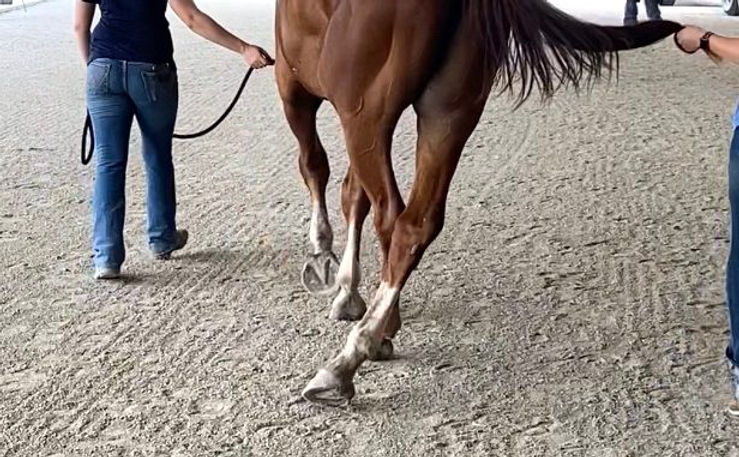What is EPM in Horses?
Equine Protozoal Myeloencephalitis (EPM) is a serious neurological disease affecting horses. It is caused by a parasite that can damage the horse’s central nervous system, leading to a wide range of clinical signs. In this comprehensive article, we will explore the causes, symptoms, diagnosis, treatment, and prevention of EPM in horses.
Causes of EPM
EPM is primarily caused by two parasites:
- Sarcocystis neurona: This is the most common cause of EPM in horses in North America. The parasite is found in the feces of opossums, which are the definitive host.
- Neospora hughesi: This parasite has been identified as a less common cause of EPM in horses. It is believed to be transmitted by an unknown definitive host.
Horses become infected by ingesting feed, water, or soil contaminated with opossum feces containing the parasite’s infective stages (sporocysts). Once ingested, the sporocysts travel through the horse’s body and can eventually reach the central nervous system, where they can cause damage and inflammation.
Risk Factors for EPM
Several factors can increase a horse’s risk of developing EPM:
- Age: Young horses (1-5 years old) and older horses (over 13 years old) have a higher risk of developing EPM.
- Season: The risk of EPM is higher in spring, summer, and fall compared to winter.
- Environment: The presence of opossums, wooded areas, and lack of wildlife-proof feed storage on a premises can increase the risk of EPM.
- Stress: Stressful events such as heavy exercise, transport, injury, surgery, or parturition can weaken a horse’s immune system and make them more susceptible to EPM.
- Immune status: Horses with compromised immune systems, either due to age or other factors, are more likely to develop clinical signs of EPM.
Clinical Signs of EPM
EPM can cause a wide range of neurological signs, depending on the location and extent of the damage to the central nervous system. The most common clinical signs include:
- Ataxia (incoordination) and weakness: Often more pronounced in the hind limbs, especially when the head is elevated or the horse is moving up or down slopes.
- Muscle atrophy: Most commonly seen in the hindquarters, but can also affect the face, neck, or front limbs.
- Lameness or abnormal gait: EPM can cause lameness that is often asymmetric and difficult to localize.
- Cranial nerve deficits: Damage to the cranial nerves can lead to facial paralysis, head tilt, difficulty chewing or swallowing, drooping eyelid or lip, and abnormal eye movements.
- Behavioral changes: Some horses with EPM may exhibit changes in attitude or behavior, such as aggression or lethargy.
In severe cases, EPM can cause seizures, collapse, or even death. It’s important to note that these clinical signs can also be caused by other neurological conditions, so a thorough veterinary examination is necessary for an accurate diagnosis.
Diagnosis of EPM
Diagnosing EPM can be challenging due to the variability of clinical signs and the lack of a single definitive test. Your veterinarian will likely perform a combination of the following diagnostic tests:
- Physical and neurological examination: This helps rule out other potential causes of the clinical signs and provides a baseline for monitoring the horse’s progress.
- Blood tests: These tests can detect antibodies to the EPM-causing parasites, indicating exposure. However, a positive result does not necessarily mean the horse has active EPM.
- Cerebrospinal fluid (CSF) analysis: This is considered the most reliable antemortem test for EPM. The CSF is collected via a spinal tap and analyzed for the presence of parasite-specific antibodies. A positive CSF result, along with compatible clinical signs, is strongly suggestive of EPM.
- Response to treatment: If a horse shows improvement after receiving anti-protozoal medication, it can support a diagnosis of EPM, although a lack of response does not necessarily rule it out.
Treatment of EPM
The treatment for EPM typically involves a combination of anti-protozoal medications and supportive care. The most commonly used drugs are:
- Ponazuril: This is an oral paste that is given for a minimum of 28 days. Some horses may require additional courses of treatment.
- Diclazuril: This is an oral pelleted medication that is given for at least 28 days, with the potential for additional courses.
- Sulfadiazine and pyrimethamine: This combination is given as an oral liquid suspension for 90 to 270 days, depending on the severity of the case.
In addition to medication, supportive care may include:
- Anti-inflammatory drugs: To reduce inflammation in the central nervous system.
- Vitamin E, folic acid, and thiamine supplements: To support neurological function.
- Physical therapy: To help maintain muscle tone and prevent further atrophy.
- Nursing care: For severely affected horses that are unable to stand or eat on their own.
Prognosis for EPM
The prognosis for EPM depends on several factors, including the severity of the clinical signs, the duration of the disease, and the horse’s response to treatment. In general:
- 60-70% of horses treated for EPM show improvement in their clinical signs.
- 30-40% of horses treated for EPM show a complete resolution of their clinical signs.
- 10-20% of horses treated for EPM do not respond to treatment or experience a relapse of their clinical signs.
It’s important to note that even with successful treatment, some horses may not fully recover and may have residual neurological deficits.
Prevention of EPM
There are several steps horse owners can take to help prevent EPM:
- Limit opossum access: Store feed in animal-proof containers and keep the barn and surrounding areas clean and free of potential opossum nesting sites.
- Use a clean water source: Provide horses with water from a municipal source or a well, rather than from a stream or pond that may be contaminated with opossum feces.
- Consider vaccination: While there is currently no vaccine approved for use in horses, research is ongoing to develop effective EPM vaccines.
- Reduce stress: Minimize stressful events such as long-distance transport, changes in management, or excessive workloads.
- Maintain a strong immune system: Ensure that horses receive proper nutrition, regular deworming, and appropriate veterinary care to support their overall health and immune function.
FAQ Section
Q1: What is EPM?
A1: EPM, or Equine Protozoal Myeloencephalitis, is a serious neurological disease in horses caused by the parasites Sarcocystis neurona and Neospora hughesi.
Q2: How do horses get infected with EPM?
A2: Horses become infected by ingesting feed, water, or soil contaminated with opossum feces containing the parasite’s infective stages (sporocysts).
Q3: What are the most common clinical signs of EPM?
A3: The most common clinical signs of EPM include ataxia (incoordination), muscle atrophy, lameness, cranial nerve deficits, and behavioral changes.
Q4: How is EPM diagnosed?
A4: EPM is diagnosed through a combination of physical and neurological examinations, blood tests, cerebrospinal fluid analysis, and response to treatment.
Q5: What are the treatment options for EPM?
A5: EPM is typically treated with a combination of anti-protozoal medications, such as ponazuril, diclazuril, or sulfadiazine and pyrimethamine, along with supportive care.
Q6: What is the prognosis for horses with EPM?
A6: The prognosis for EPM varies, but generally, 60-70% of treated horses show improvement, 30-40% show complete resolution of clinical signs, and 10-20% do not respond to treatment or experience a relapse.
Q7: Can EPM be prevented?
A7: Steps to prevent EPM include limiting opossum access, using clean water sources, considering vaccination (if available), reducing stress, and maintaining a strong immune system.
Q8: Is EPM contagious between horses?
A8: No, EPM is not directly contagious between horses. Horses become infected by ingesting the parasite from the environment.
Q9: Can humans get EPM from horses?
A9: No, EPM is not transmissible from horses to humans.
Q10: Where can I find more information about EPM in horses?
A10: For more detailed information, you can visit the USDA website dedicated to horse health and disease information.
Summary Table
| Risk Factor | Increased Risk |
|---|---|
| Age | 1-5 years old or over 13 years old |
| Season | Spring, summer, and fall |
| Environment | Presence of opossums, wooded areas, lack of wildlife-proof feed storage |
| Stress | Heavy exercise, transport, injury, surgery, parturition |
| Immune status | Compromised immune system |
EPM is a complex and challenging disease that can have serious consequences for affected horses. By understanding the causes, risk factors, clinical signs, and available treatment options, horse owners and veterinarians can work together to prevent, diagnose, and manage this important neurological condition.



